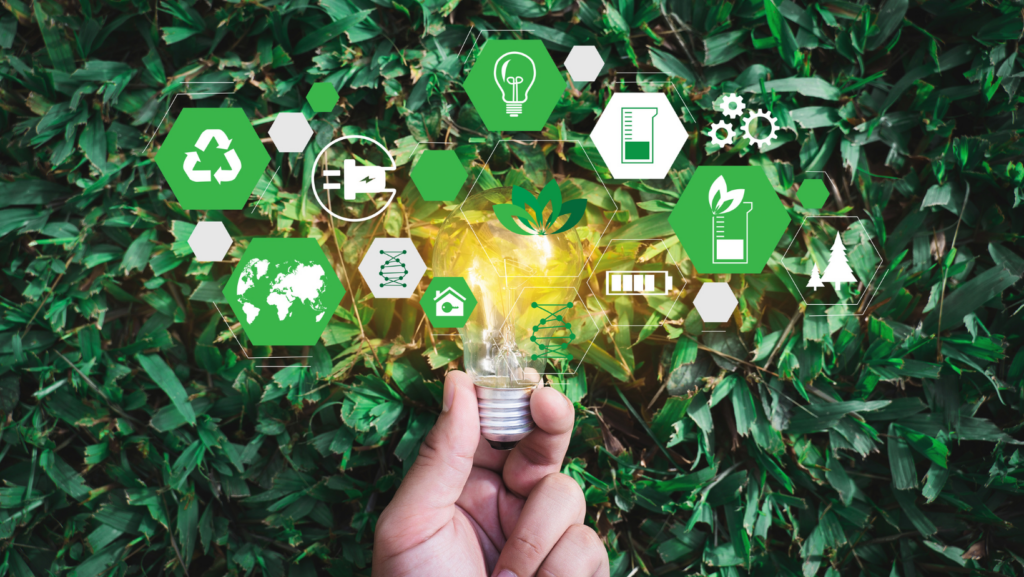Launching into National Chemistry Week 2022
National Chemistry Week is an event that has always strived to highlight the value of chemistry in everyday life. A mission that has never been more relevant with respect to the development of sustainable living.

The theme of National Chemistry Week 2022 is sustainability. With national and international initiatives pushing for a major change in CO2 emissions, and the influence of supply pressures, chemistry has taken the forefront in the development of sustainable technologies.
New advances in chemistry power some of the largest industries underpinning our lives, whether that’s the organic synthesis responsible for new pharmaceuticals, the material chemistry behind new polymers, or the improvements in battery solutions driving the automotive industry. Whilst it’s easy to appreciate the benefits, we thought we’d take National Chemistry Week as an opportunity to reflect on the significance of chemistry in our lives.
Biodegradable plastics
Polyhydroxybutyrate (PHB) is a biodegradable plastic currently used for packaging, disposable items, and oil spill remediation. Furthermore, it is also used in controlled drug delivery in pharmacology, and bioabsorbable sutures or dressings. Within the polymer industry, it is used to retrieve monomers for the synthesis of polymers. Just recently, a new method of synthesis utilising artificial photosynthesis was developed to synthesise PHB from acetone and CO2.1
CO2 has long been regarded as one of the biggest factors of climate change. By functioning as a greenhouse gas, it has multiple knock-on effects on the environment. As such, many industries are aiming to either reduce CO2 emission, or use CO2 in a productive way so that it is taken out of the environment. This development may lead to further investigation into potential improvement of the life cycle of CO2.
Car batteries
Recent developments in Lithium-ion batteries have resulted in the improvement of cathode materials. By doping the cathode material with germanium, the interaction between oxygen and the metal cations is strengthened, stabilising the electron configuration that confers structural stability to the material. For practical use, this means that the batteries have improved energy density, and a higher voltage output, as well as faster charging capability. This means that electric cars have much more reasonable charging times, which is a must for the long-term switch to electric cars from petrol or diesel. Multiple alternatives to the Lithium-ion battery are all competitive, with sodium and zinc having the potential to become more sustainable alternatives with further improvement of energy density and reaction specificity respectively.2

Aerogels
Derived from gels, aerogels are a porous material with low density, where the liquid component of gels is instead replaced with a gas. This, along with the ability to modify outer hydroxyl groups, gives them many useful properties, such as low thermal conductivity, hydrophobicity, fire-resistance, and low weight. This has led to their common use within the textiles industry for thermal insulation, however other uses have come to light. For instance, calcined silica, carbon fibre, and cellulose aerogels have all been used to absorb dyes within textile wastewater, with the added benefit that they can be reused after regeneration. Other methods have involved using aerogels as structural supports for catalytic metals, allowing for efficient ozonation of textile wastewater.

What now though?
National Chemistry Week is a great opportunity to get involved yourself! If you want to keep up to date with the most recent developments in sustainability, don’t forget to check out the resources offered by the Royal Society of Chemistry. With journals and workshops featuring the latest chemistry news in energy, fuels, and materials, there’s plenty of ways to take part.
https://www.rsc.org/new-perspectives/sustainability/our-strategic-approach-to-sustainability/
There’s even something for the youngest budding chemists to do, with interactive experiments to do at home! We’ve compiled the best exciting ideas into our blog here:
https://www.asynt.com/blog/stem-activities/
Don’t forget to tag us when you’re sharing your results on Twitter or Instagram :)
Sources: https://phys.org/news/2022-10-success-biodegradable-plastic-materials-sunlight.html https://phys.org/news/2022-11-molecular-orbital-interaction-stabilizes-cathode.html https://www.sciencedirect.com/science/article/pii/S014294182100369X





